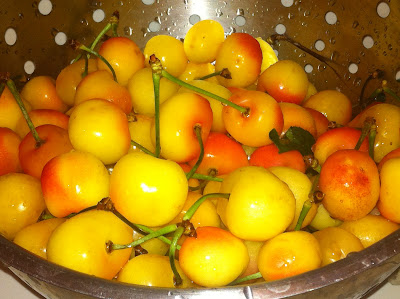Really, besides the truth of hidden carbs behind the labeling of most protein, energy and meal supplement/replacement bars the real reason why they are a "no-no" in my book is that simply opening and package of instant calories will never help you establish the habits of preparing and eating "real" food. If you are overweight, all bars are not an option. Dried fruit and nuts are a better option, although high in calories per serving. You should only be eating these foods as a snack anyway, not as a replacement for a "real" meal.
As Mark has explained this to me....beware mostly of products that claim "zero carbs", as it's just an "accounting formality". Hidden carbs are grain alcohols that don't have to be listed as carbohydrate, supposedly because they don't raise your blood sugar as much as "regular carbs". If you do the math the unaccounted calories are in fact grain alcohol carbs.
You don't get hidden carbs in product that say they have carbs. But is anybody being confused about ingredients like date sugar, and cane sugar being sugar?
Here is more information about "bars" I found online:
The Truth About Nutrition Bars
In a recent study published by consumerlabs.com 30 nutrition bars were broken down/analyzed and over 60% of the bars failed to meet labeling claims! What is really in your “health or nutrition bar”?

Meal replacement bars, snack bars, weight loss bars, energy bars, and protein bars are a convenient and easy way for people to get a quick snack or meal when they are on the go. The problem is that 99% of the products out there are loaded with carbs and sugars that spike insulin levels and promote fat storage. Despite the hidden ingredients and artificial additives, marketing gurus have duped consumers into thinking that these “nutrition bars” are an excellent source of vitamins and minerals when in reality this is far from the truth. The FDA claims that it currently does not have any formal guidelines for nutrition bars or the labeling on nutrition bars.
The Breakdown
“Protein Bar” is an extremely deceptive term. Most bars contain more carbs than protein. The consumer labs study found that a typical bar is made up of
- 49% of calories from carbohydrates (mostly from sugars)
- 29% of calories from protein
- 22% of calories from fat
Clif Bars



The concern here is the 45 grams of carbs and 21 grams of sugar (for comparison a snickers bar has 35 grams of carbs and 28 sugars). If you are not an endurance athlete than that amount of carbs in the form of a small snack is way to high. Ever notice how the Clif Bar rapper conveniently covers the ingredient list. Here is why. With over 30 ingredients, it is hard to decipher what exactly the bar is made up of. Organic rice syrup, evaporated cane juice, organic evaporated can juice, organic date paste, are all fancy names for sugar that make up this so-called “nutrition bar”. While ingredients like evaporated cane juice are not as detrimental to refined sugar, it is close enough.
Stay away from Clif bars
Atkins Advantage Bar


With Atkins Advantage you get more bang for you buck because the lower carb and sugar levels. You also get a solid 15 grams of protein with only 210 calories. The unfortunate part is the saturated fat and ingredients. With over 50 ingredients, there are several hidden land mines such as glycerin, sucralose, cellulose, artificial flavors, which are all code names for SUGARS!
Eat only if there is no whole/unprocessed foods available like fruit or nuts.
Nature Valley Bar

I commend General Mills for their bold and forthright honesty. They are not trying to hide anything. The second ingredient is SUGAR! With high levels of carbohydrates and sugar, nature valley bars have nothing “natural” about them. High fructose corn syrup and brown sugar syrup are two ingredients that have single handily added to the obesity problems in the US.
Don’t even think about it
Power Bars


This label is also very informative as it provides the disclaimer that the FDA has no regulation over these “health bars”. With 45 carbs, 27 grams of sugar, ingredients such as evaporated cane juice, glucose syrup, and fructose, a power bar is basically a glorified candy bar. At least they have less than 30 ingredients as opposed to some of the other examples listed right?
If you are going to have something with the nutritional equivalent of a candy bar why not actually have a candy bar that tastes great? Opt for a snickers or twix instead.
Why so much sugar?
In their early development, nutrition bars were bland and primarily eaten by fitness enthusiasts. However, the bars underwent a transformation to appeal to general consumers. The bland, stiff, and protein packed bars didn’t necessarily appeal to the general population. To compensate, manufacturers made their products more flavorful by adding corn syrup, sugar, sugar alcohols, artificial sweeteners, artificial flavors, colors and hydrogenated oils, which are all bad for your health.
I copied most of this article here:http://kevindeeth.wordpress.com/2012/05/18/the-truth-about-nutrition-bars/
For more, click the link





































